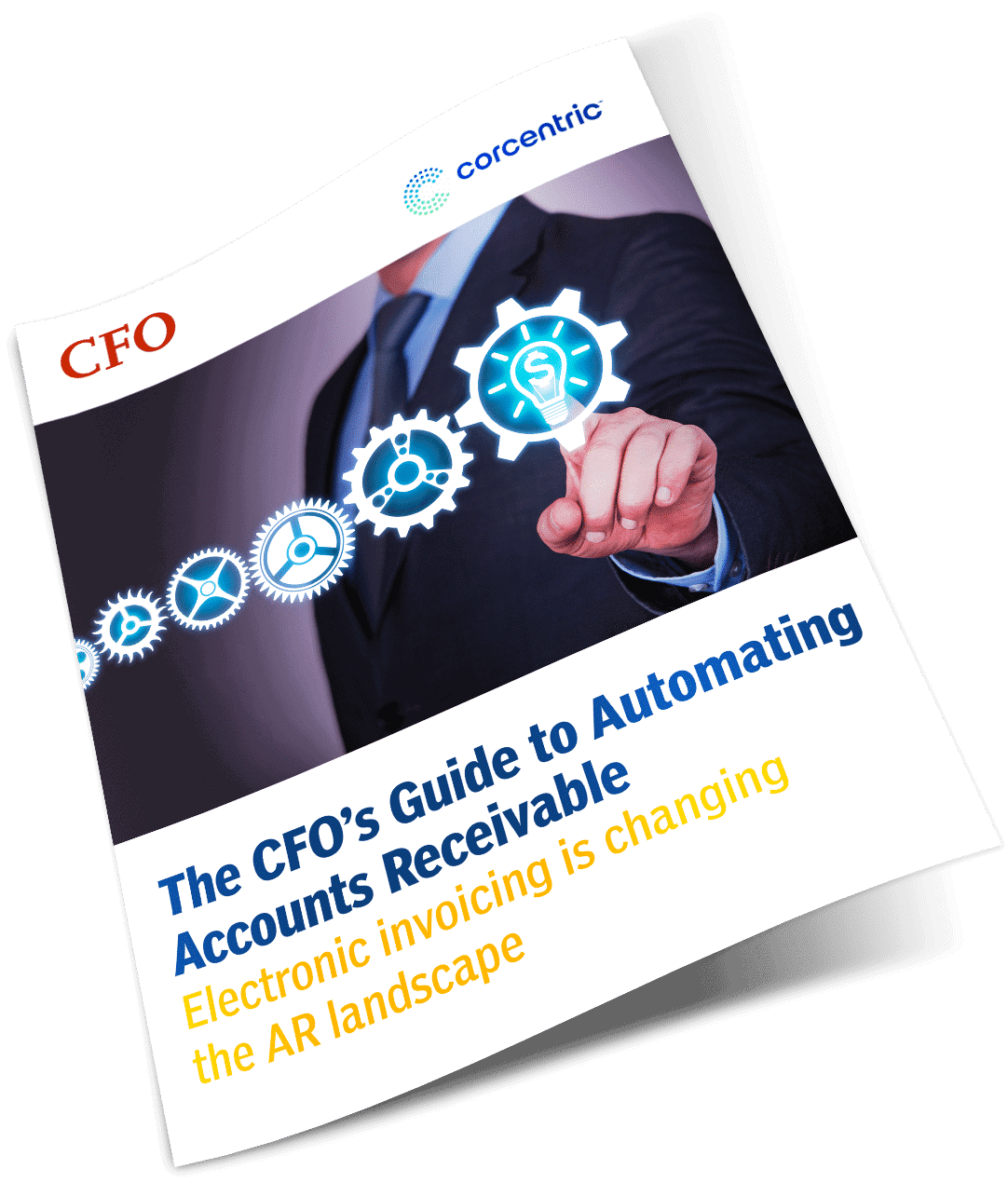3 Factors that Reduce Credit Risk in B2B Payments
Home - 3 Factors that Reduce Credit Risk in B2B Payments
Corcentric

In the global economy, where competition and disruption seem to be waiting around every corner, the winners will be those companies that are proactive.
That’s true in product development, customer service, and marketing: in fact, in every facet of the business. Yet, when it comes to finance functions like accounts payable and billing, too many companies still seem to cling to “old school” processes and procedures, relying on manual and paper-based invoice creation and submission as well as receivables.
Using manual and paper-based processes can result in unnecessary credit risk. Reducing that risk depends on three factors: real-time visibility, real-time analytics, and a resource that can provide a reliable credit risk assessment. You can only accomplish this with a digitized automated billing solution.
1. Real-time visibility helps optimize working capital management
2. Real-time analytics can help avoid “risky business”
3. A third-party provider can focus on assessing credit risks
1. Real-time visibility helps optimize working capital management
Digitizing your AR functions will definitely streamline each step in the transaction process, offering a greater guarantee of accuracy through elimination of both paper and manual intervention. For companies that implement a cloud-based automated billing solution, benefits will go much deeper and can help shorten an enterprise’s Days Sales Outstanding (DSO).
Real-time visibility into the status of invoice payments is crucial! It enables companies to better manage their working capital and make investments that will contribute to company growth. And the ability to identify credit risks sooner rather than later will definitely help achieve those goals.
2. Real-time analytics can help avoid “risky business”
For prospects, credit reports offer only a partial calculation of risk
When assessing the credit-worthiness of a prospective customer, companies often take the traditional path of registering with a credit bureau like D&B. The credit report issued by the bureau will include a prospect’s past payment history, revenue, and outstanding obligations.
What the credit report won’t include is information derived from analytics based on deeper data. This limited information may be enough to decide whether or not to extend credit limits to a new customer and on what terms. However, it doesn’t give you enough information to predict the future business trends of this prospect. In effect, with a traditional credit bureau, you’re looking at a new customer’s creditworthiness through the rear-view mirror rather than looking ahead at the possibilities.
For existing customers, complacency can prove costly
Although new customer acquisition is absolutely necessary for growth, it’s important to remember that it costs five times as much to acquire a new customer as it does to retain an existing one. But wanting to retain existing customers shouldn’t result in complacency when it comes to looking at payment trends.
Timing of payments can change in subtle ways throughout cycles. Although these subtle changes can indicate future payment problems, most accounts receivable departments may not have the internal resources to identify and follow up on these very slight changes. Rather than hiring new personnel, companies may choose to outsource credit risk and analytics functions to their automated billing solution provider.

It’s time to get proactive with your payments and risk
3. A third-party provider can focus on assessing credit risks
How would this work? The provider would look at established customer patterns of payment and terms compliance on a customer-by-customer basis. There may be an assessment that there are customers that consistently pay on time; however, by overlaying the payment data with real-time analytics, dashboards created within the solution might show a very slow and subtle change in timing. At that point, it would be advisable to put in a tickler (+ or – 5 days, for instance) to follow and identify any concerning trends.
Once you identify an issue, there are two possible paths to take. One is to do some exploration on your own (or have your provider do so) to check if there is any information that might point to a business problem of that customer. Or, you could simply call the customer, note that there has been a small discrepancy in payment patterns, and inquire as to the problem. The answer could be quite benign and a quick, friendly call will help maintain a good buyer/seller relationship. If the answer is troubling, you will have identified the problem before it can significantly impact your bottom line.
When you begin to look for a third-party solution provider, there are two major areas to look for: 1) expertise and talent; 2) best practices and techniques. That is, ascertain whether or not that provider has deep expertise and talent in the areas of both technology and accounts receivable. And make sure they consistently exhibit the use of best practices and techniques. Risk is a natural part of doing business. But being able to reduce that risk will prove ever more important in this increasingly competitive economy.
Learn how the right automated billing solution can cut complexity and reduce credit risk.